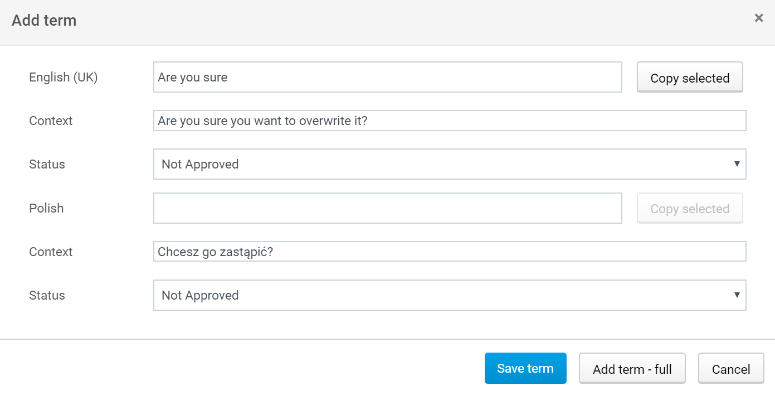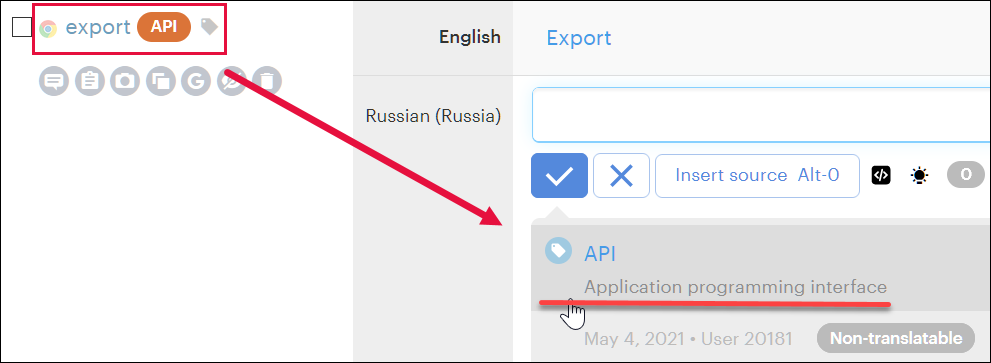Language Assets

Welcome to the fourth installment of the Buyer Series on shopping for localization services! Thank you so much for staying with me.
This post covers glossaries and style guides, which I refer to as 'language assets'. Translation memory is an asset as well, but this post focuses on the former two items.
More Prep
Jill chuckles to herself. Like many others living in covid times and working from home, she realizes her life is much like that of a character in the movie Groundhog Day. She makes her coffee, walks to her previously-a-storage-room-now-an-office and turns on her pc.
An email from Dianne is waiting for her.
Jill,
Great job on the Project Plan and getting pricing from all three LSPs.
LSP #3's price point looks great and the management team is eager to get this project underway. What are your next steps? Please update me when you have a minute.
Diane
In Part 3, Pricing and Leverage, the three LSPs that Jill is considering for translation services provided their pricing information. One of the three is 33% below the earmarked budget of $10,000 that Dianne laid out initially. Enticing.
Let's walk through why Jill's discovery work is not done, though. And why although the least expensive option is now driving the decision-making in the mind of her boss, there are other aspects to having the Wordpress site translated that have to be considered.
Jill looks over the pricing information and the now-substantial amount of information in her Project Plan. She goes back to the email threads with the three LSPs, one of which catches her eye.
Hi Jill,
Thank you again for giving us the opportunity to provide you with an estimate. Please find the details attached.
The pricing covers the three target languages you have requested: Korean, German, and Spanish (US). We analyzed the source words from your Wordpress website. The analysis breaks the words down into weighted word tiers based on translation memory. As we discussed, there is very little leverage because this is a new project and there is no pre-existing translation memory.
If you decide to chose LSP #1 as your language service partner, the first thing we would recommend doing is a glossary and style guide project. Do you have either of these yet? We call them 'language assets' and they are essential for many reasons. Do you have time for another 30-minute Zoom call?
Best regards,
LSP#1
Glossaries and style guides aren't foreign concepts to Jill. As a content editor, she is quite familiar with matters of word choice.
Her colleague, Adalia, often talks about it. Jill was on a call with Adalia recently when she was chatting about a difference between Spanish (Spain) and Spanish (Venezuela). She said how everyone knows that amigo is the word for 'friend' in Spanish (Spain).
Did you know that the word for 'friend' in Spanish (Venezuela) is pana? And that, conversely, pana in Spanish (Spain) means 'corduroy (jeans)'? 👖
A terrific example of how the same base language has variations across locales, and which illustrates the essence of why 'localization'—not translation—is so important to understand. (👉Pro buyer tip. You can save money by translating content into one Spanish locale, and then pivoting the results for two different locales (instead of translating both locales from scratch).)
Language Assets Defined
We all know what the traditional definition of an 'asset' is:
“…A resource with economic value that an individual, corporation, or country owns or controls with the expectation that it will provide a future benefit.” --Investopedia
I would define a ‘language asset’ as:
“A resource with contextual value that a linguist can easily access and interact with. The asset is either in a standalone file format or integrated with a computer-assisted translation tool or translation management system. It guides the linguist towards making stylistic decisions in the target language that matches the preferred tone of voice of the customer paying for the translation.” --LocNavigator
It's signage on the road that keeps your translations from straying off track.
Glossaries
Jill takes LSP #1 up on their offer for another call. She is asked about whether Company X has written and is maintaining a glossary for any of the three target languages. Jill knows that there is strong awareness of word choice at Company X, not just through anecdotes shared on Zoom calls, but also in her role as a content editor.
The thing is that much of the glossary information currently resides inside the heads of various individuals across the company. Specific terms have not been laid out in an spreadsheet in an organized way.
Jill thinks to herself, "Here we go again." In light of the follow-up call with LSP #1, Jill has more unexpected work to do. She's got to coordinate efforts internally to create a glossary for each language.
LSP #1 tries to assuage her. It is not difficult at all to get started. The file format could be as simple as:
- a Google Sheet,
- an Excel Spreadsheet, or
- a csv
They also give her some ideas about what kinds of information to include.
- Column A: Source English (US) terms,
- Column B: Corresponding Korean (ko),
- Column C: Notes for Korean (k0),
- Column D: Spanish (Venezuela) (es-ve),
- Column E: Notes for Spanish (Venezuale) (es-ve),
- Column F: German (de), and
- Column G: Notes for German (de).
Jill creates a spreadsheet so that her team can get to work. She also does a little research.
Jill finds that if Company X builds a mature localization program that covers multiple products, they could invest in a translation management system (TMS) that provides an in-platform editor for creating a glossary and that nicely centralizes these assets. This is a more advanced, SaaS approach to building the glossary. Here's an example of what that would look like in XTM:

She gets more curious and rummages around Twitter. Evidence of the importance of glossaries is widely available. She finds large brand names who are committed to promoting consistency and transparency of terminology across all target languages.
Thanks to the amazing #GitOps community, the GitOps principles and glossary are now available in 5 languages. English, French, German, Portuguese, and Spanish! https://t.co/W2o7BZPm1K
— Dan Garfield (@todaywasawesome) September 2, 2022
Thanks to GH: lp-francois @SmallFrenchGuy @christianh814 for getting French over the line!
Style Guides
LSP #1 also explained that the companion document to the glossary is the style guide. This document gives detailed instructions to the linguist beyond the A = B format adopted in the glossary. Companies who go to the trouble to create one save money over time because editing cycles are shorter.
A style guide is a document that defines rules of syntax to enhance a company's marketing copy and brand image. It illustrates the rules with examples of source and target language and provides information to contextualize product concepts and ensure the values held by the company are properly articulated. It reinforces consistent writing. --LocNavigator
While Jill was on Twitter, she decided to search for "style guides," too.
This week's style guide:
— Bret Strelow (@bretstrelow) August 29, 2022
— First reference: App State preferred, but Appalachian State is OK
— app-uh-LATCH-in (not app-uh-LAY-chin)
— Kidd Brewer Stadium (no hyphen; Kidd Brewer was one person, not two last names)
— Tar Heels = two words, not one pic.twitter.com/QcZXiC61l9
Language Assets in Action
Jill finds a screenshot of what a translator would see when doing her work in a project to which a glossary has been attached. Smart color-coding schemes call the translator's attention to words that have been defined. The translator then quickly scans the translation and incorporates it into her work without missing a beat.
In the TMS Lokalise, the string "export API" needs to be translated into Russian (ru). The system automatically detects the term "API". It shows that the term can be used as-is in Russian, and the term entry includes an annotation spelling out the acronym.

Jill appreciates how language assets fit into localization programs and understands the value that they add. They are highly organized, shareable documents that integrate with translation tools. The linguists who work on Company X's translation projects will have direct access to them when deciding how to translate terminology, phrases, and expressions so that the resulting translations hew to Company X's values and mission.
Next Steps
- Jill reaches out to internal co-workers to help her start building a glossary and style guide for the three target languages.
- She updates the Project Plan her findings about language assets.
- She hasn't addressed it yet, but knows that there is one more item that merits her attention before she can present her recommendations to Diane: linguistic QA.
Localization Roles Used in This Series
Company X: A business with a Wordpress website and a flagship product called Product Oh Yeah. Both need to be translated.
Jill: The localization manager (LM) working for Company X. Jill's title is 'Content Manager.' She was hired to create and manage content in Wordpress, and she has no previous experience with localization.
Diane: Content Strategy VP at Company X. Appointed to oversee the localization budget. Diane wants to translate the Wordpress website and Product Oh Yeah into French (France), German, and Spanish (US) if the costs fit the initial earmark. If not, then Spanish (US) only.
Lisa: Friend of Jill working at another company, Company Y. Has some experience localizing a Wordpress website into Korean.
Beth: A Wordpress developer working at HQ for Company X.





Member discussion